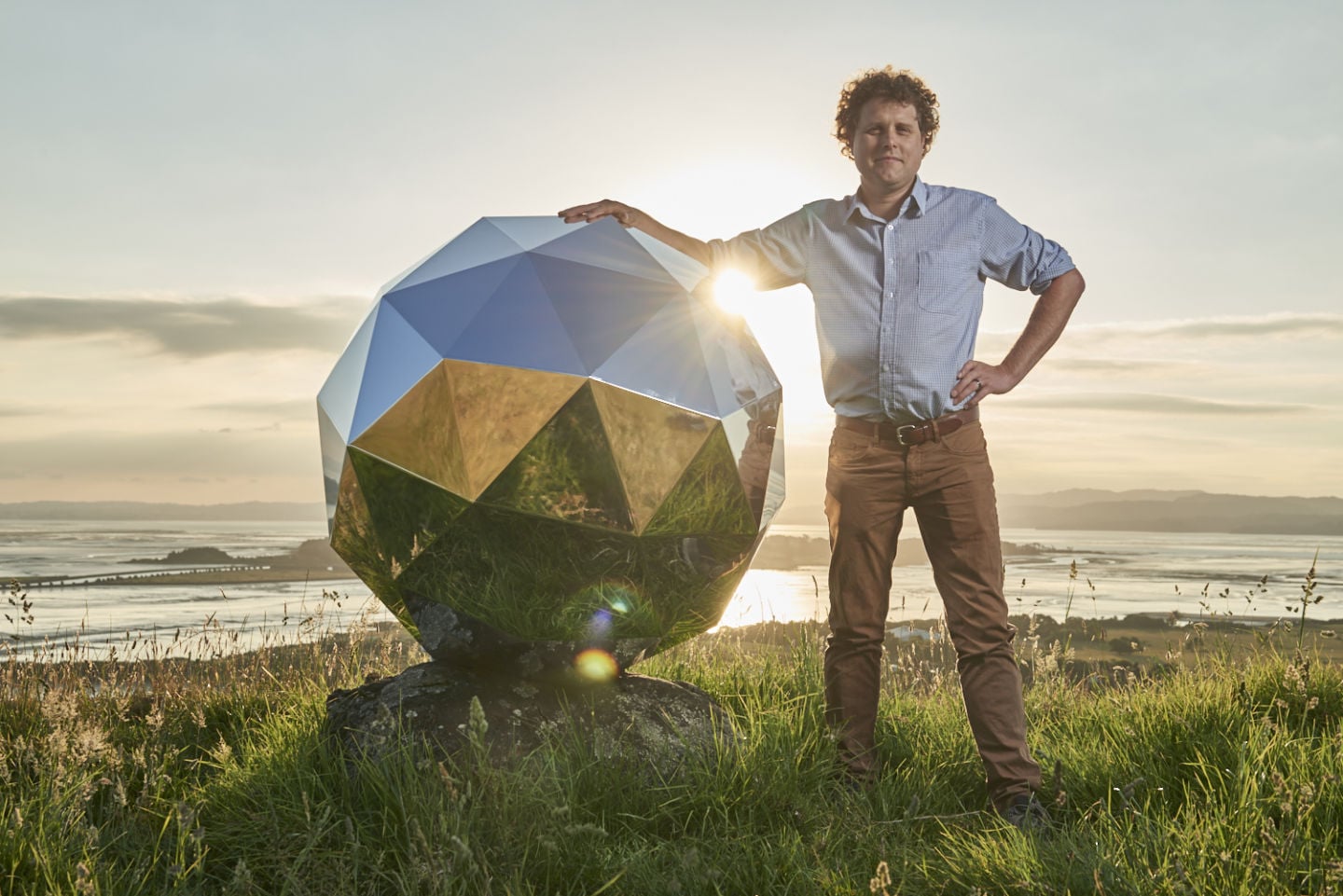This past weekend, the New Zealand-based aerospace company Rocket Lab reached another milestone. On Sunday, January 21st, the company conducted the second launch - the first having taken place
this past summer
- of its Electron booster. This two-stage, lightweight rocket is central to the company's vision of reducing the costs of individual launches by sending light payloads to orbit with regular frequency.
This mission was also important because it was the first time that the company sent payloads into orbit. In addition to several commercial payloads, the launch also sent a secret payload into orbit at the behest of the company's founder (Peter Beck). It is known as the "
Humanity Star
", a disco-like geodesic sphere that measures 1 meter (3.3 ft) in diameter and will form a bright spot in the sky that will be visible to people on Earth.
The Humanity Star is central to Beck's vision of how space travel can improve the lives of people here on Earth. In addition to presenting extensive opportunities for scientific research, there is also the way it fosters a sense of unity between people and nations. This is certainly a defining feature of the modern space age, where cooperation has replaced competition as the main driving force.
[caption id="attachment_138368" align="aligncenter" width="580"]
The Electron rocket prepping for its second launch last weekend. Credit: Rocket Lab
[/caption]
As Beck explained to
ArsTechnica
in an interview before the launch:
Like the Electron rocket, the Humanity Sphere is made of carbon fiber materials and it's surface consists of 65 highly-reflective panels. Once it reaches an orbit of 300 by 500 km (186 by 310 mi), it will spend the next nine months there reflecting the light of the Sun back to Earth. Whether or not it will be visible to the naked eye remains to be seen, but Rocket Lab is confident it will be.
According to Beck, the sphere will be more visible than a Iridium flare, which are easily spotted from the surface. These flares occur when the solar panels or antennae of an Iridium satellite reflect sunlight in orbit. "Most people will be familiar with the Iridium flares, and this has got much, much more surface area than an Iridium flare," Beck said. "In theory, it will be easy to find."
[caption id="attachment_138367" align="aligncenter" width="580"]
The payload will last for about nine months in orbit. Credit: Rocket Lab
[/caption]
Beck got the idea for the project from talking to people about where they live. In his experience, people tend to think of their locality or nationality when they think of home. Whereas many people he had spoken to were aware that they lived on planet Earth, they were oblivious to where the Earth resided in the Solar System or the Universe at large. In this respect, the Humanity Sphere is meant to encourage people to look and think beyond.
As he states on the
website
the company created for the Humanity Sphere:
[caption id="attachment_138370" align="aligncenter" width="580"]
The Electron rocket launching on Sunday afternoon, 2:42pm, New Zealand time. Credit: Rocket Lab
[/caption]
The Humanity Star can also be tracked via the website. As of the penning of this article, it is moving south of the equator and should be visible to those living along the west coast of South America. So if you live in Colombia, Peru or Chile, look to the western skies and see if you can't spot this moving star. After passing south over Antarctica, it will reemerge in the night skies over Central Asia.
Without a doubt, the Humanity Sphere is an inspired creation, and one which is in good company. Who can forget the "Blue Marble" picture snapped by the
*Apollo 17*
astronauts, or
*Voyager 1*
's "pale blue dot" photo? And even for those who are too young to have witnessed it, the images of
Neil Armstrong and Buzz Aldrin
setting foot on the Moon still serve to remind us of how far we've come, and how much still awaits us out there.
Further Reading: ArsTechnica
 Universe Today
Universe Today
